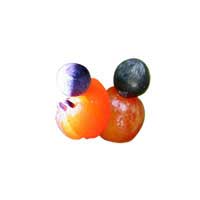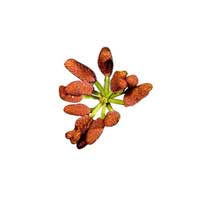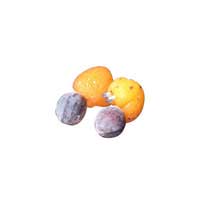 Full List of Fruits
Full List of Fruits  Kahikatea fruit
Kahikatea fruitKahikatea Fruit
![]() Introduction of Kahikatea fruit
Introduction of Kahikatea fruit
Scientific name - Dacrycarpus dacrydioides
Endemic to New Zealand, Kahikatea is a coniferous tree, which dominated the forest once. Covering much of New Zealand's swampy lowland areas, the tree is well-known for the density and purity of the stands it forms in damp areas. The main reason for the tree to evolve having a straight trunk is because it is buttressed at the base. It grows closely with other kahikatea and gets stability by huddling with others i.e. buttressing of roots. With a trunk exceeding 1 metre (3 ft) in diameter, throughout the North and South Islands, it is quite dominant and the tree grows to a height of 55 metres (180 ft).
With a spiral arrangement, the leaves appearance on young and mature trees shows a difference. Young- they are awl-shaped, 3 to 8 mm long, and twisted at the base to spread to the sides of the shoot in a flat plane; on mature trees, they are 1 to 3 mm long, scale-like and placed all round the shoot. Despite not being a pine, the tree was previously referred to as white pine.
![]() Description of Kahikatea fruit
Description of Kahikatea fruit
This evergreen tree is best grown in moist areas. Coming to its dimension details, they are just about 10x3 metres; upright and conical, it has foliage that's fine and cypres-like when mature with an overall bronze color.
Up until the 1970's, Kahikatea was used for boat building, mainly because of its long straight lengths.
 Chronic inflammatory conditions (eg. renal failure, rheumatic conditions).
Chronic inflammatory conditions (eg. renal failure, rheumatic conditions).
 Reduction of cardiovascular disease risk parameters.
Reduction of cardiovascular disease risk parameters.
 Alleviation of menopausal symptoms.
Alleviation of menopausal symptoms.
 Adjunctive treatment / prevention of various cancers.
Adjunctive treatment / prevention of various cancers.
 Management of conditions associated with a weak digestion/liver impairment.
Management of conditions associated with a weak digestion/liver impairment.
Unified in their collective growth, it requires sheltered moist woodland conditions; however each tree is distinguishable from the other. The plants of Kahikatea are not very frost-tolerant, and the trees can reach 45 metres in height in their native habitation. With a rare surpass of 6 metres, they grow slowly in Britain.
It may take just about 18 months or more, for the seeds to take root and it is best sown in a cold frame. It is highly suggested to sow stored seeds as early in the year as possible. Once, it is large enough to handle, pierce the seedlings out into separate pots and grow them on in the green house for their first winter. Soon after the last expected frosts, you can plant them out into their permanent positions in late spring or early summer. For their first winter, it is vital to give some form of protection from the cold. After the last expected frosts, you can plant out in late spring.


















